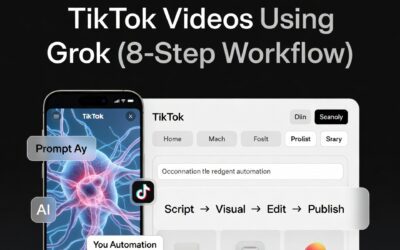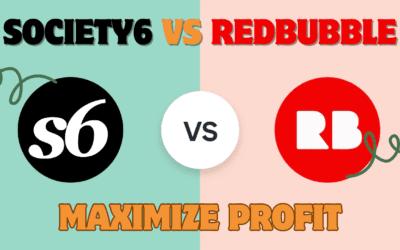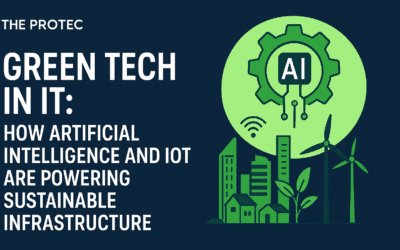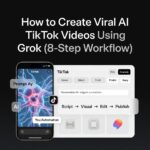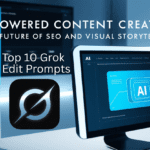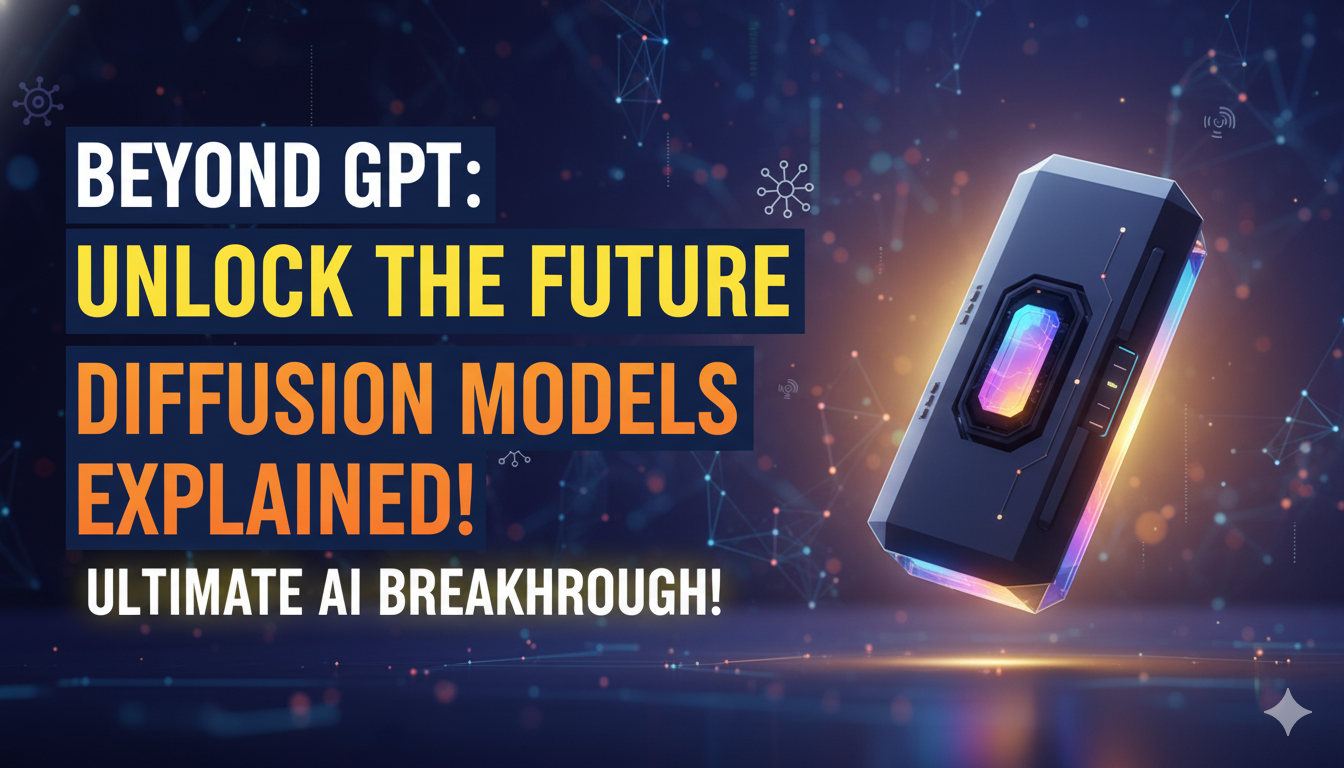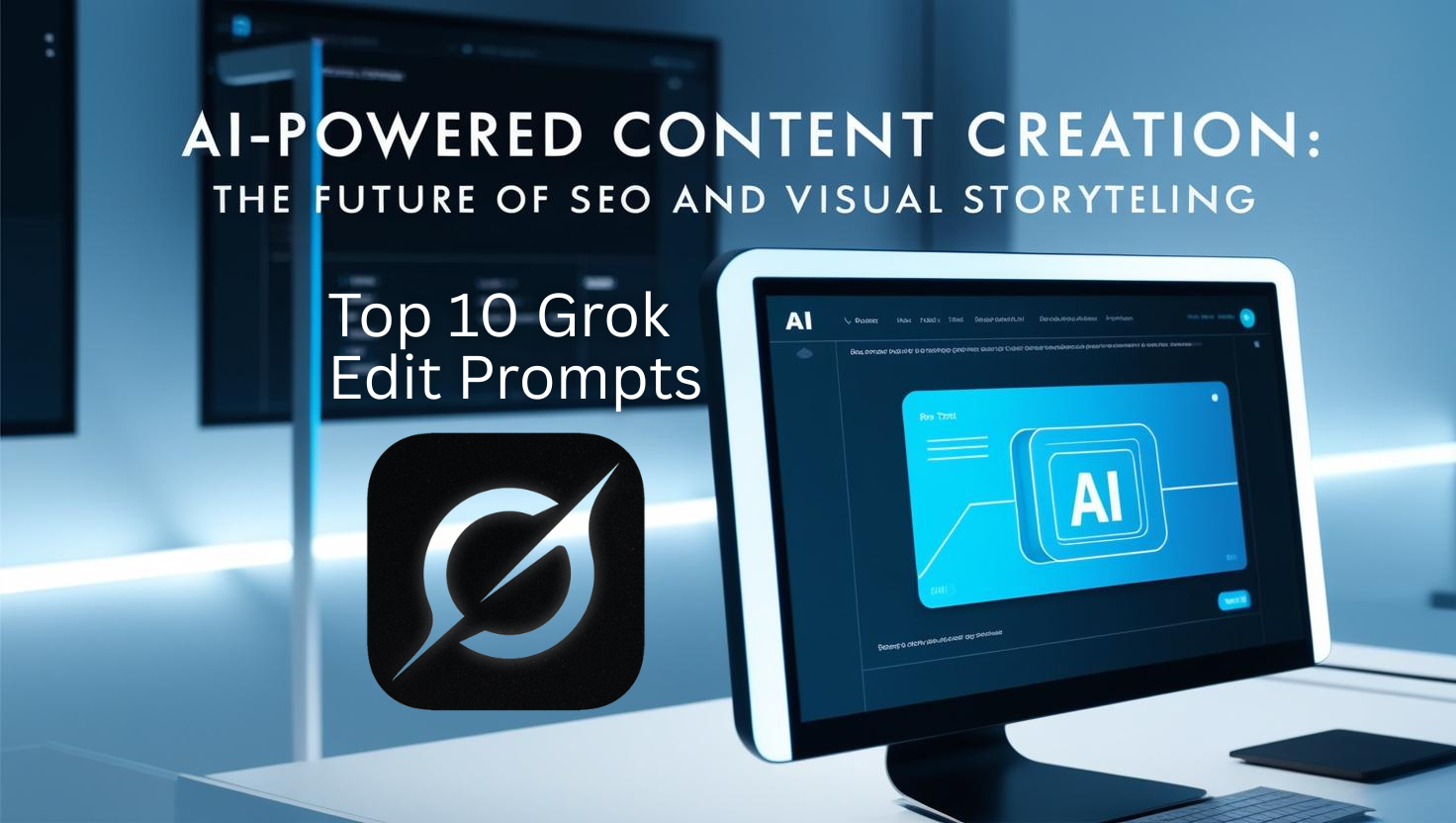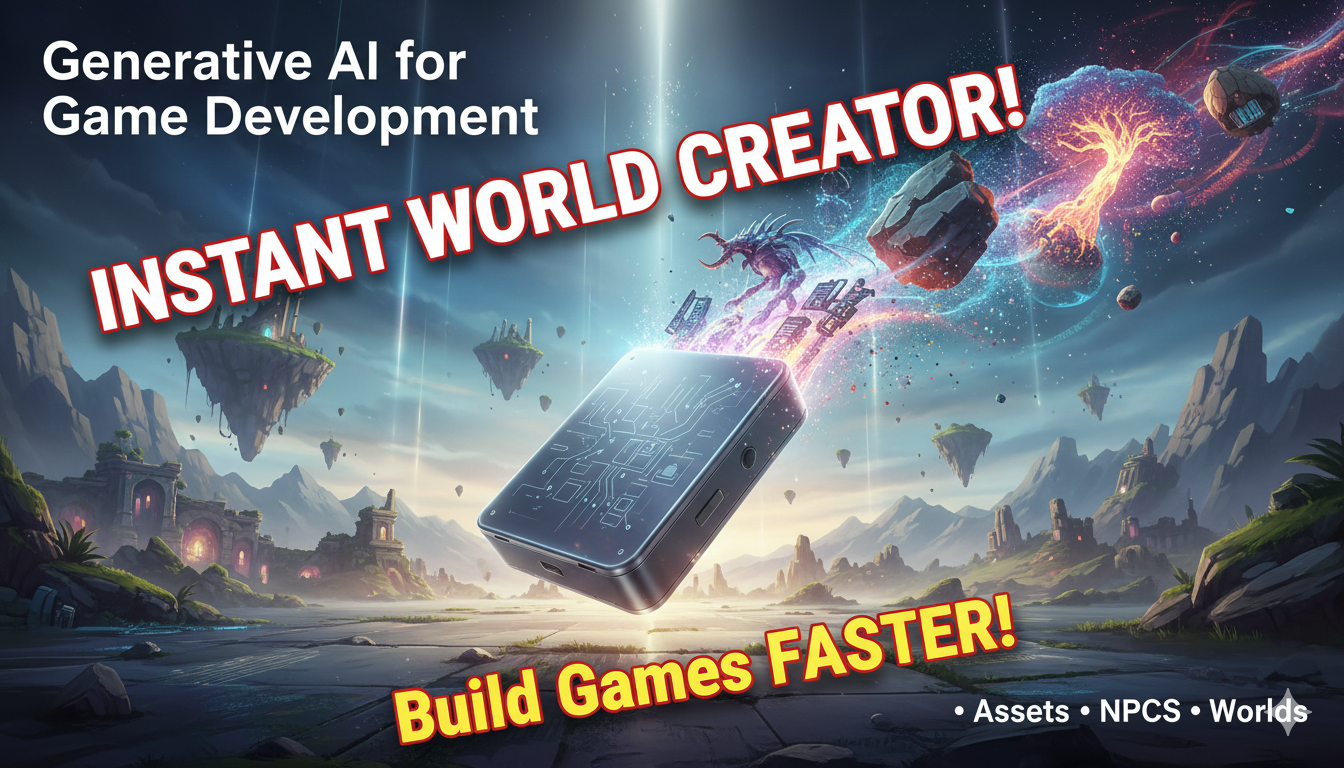In the world of artificial intelligence, GPT and its counterparts have captured the public’s imagination with their ability to generate human-like text. But beyond the realm of words, a different class of AI is creating a revolution in visual and auditory media. Diffusion Models for Image, Video, and Audio Generation are producing stunningly realistic and creative content, from photorealistic images to dynamic videos and original music. This guide delves into everything you need to know about these powerful generative tools .
📚 Background and Context:
While autoregressive models like GPT generate data (text) sequentially, predicting the next word based on all previous words, diffusion models operate on a different principle entirely. Their core intuition is inspired by physics: they learn to create by first destroying and then reversing the process.
Imagine taking a clear photograph and repeatedly adding layers of noise until it becomes a static-filled mess. A diffusion model learns to reverse this process. It is trained to take a field of random noise and, step by step, remove the noise to reveal a coherent image, video, or audio clip that never existed before . This fundamental process allows them to generate high-fidelity, diverse, and creative content across multiple media types, setting them apart from previous generative approaches .
⚙️ How Diffusion Models Work: A Step-by-Step Guide
The magic of diffusion models lies in a two-stage process: a forward diffusion that corrupts data, and a reverse denoising process that creates it.
The Forward Diffusion Process
This is a fixed process that systematically adds Gaussian noise to a training data sample (e.g., an image) over a series of T timesteps. At each step t, a small amount of noise is added according to a variance schedule β_t. This process can be summarized mathematically, allowing us to jump to any noise level t directly from the original image x_0:
x_t = √(ᾱ_t) * x_0 + √(1 - ᾱ_t) * ε
where ε is random noise from a standard normal distribution, and ᾱ_t is a cumulative product of the noise retention factors . The data sample x_0 gradually loses its distinguishable features, and eventually, x_T becomes pure noise.
The Reverse Denoising Process
This is where the model learns to generate. A neural network (typically a U-Net) is trained to predict the noise ε that was added to the image at a given timestep t. The model learns to reverse the diffusion process by taking a noisy input x_t and the timestep t, and outputting a prediction of the noise. By iteratively applying this denoising, the model can start from pure noise x_T and gradually reconstruct a new data sample x_0 .
Training Objective: The core training is surprisingly simple. The model is trained to minimize the difference between the predicted noise and the actual noise that was added. This is often a simple mean-squared error loss.
Here is a simplified Python-like pseudo-code that illustrates the core training loop:
# Pseudo-code for Diffusion Model Training
for x_0 in dataloader: # x_0 is a clean training image
t = torch.randint(0, T, (1,)) # Sample a random timestep
ε = torch.randn_like(x_0) # Sample random noise
ᾱ_t = get_cumulative_alpha(t) # Get noise schedule value
x_t = sqrt(ᾱ_t) * x_0 + sqrt(1 - ᾱ_t) * ε # Create noisy image
ε_θ = model(x_t, t) # Model predicts the noise
loss = mse_loss(ε, ε_θ) # Minimize difference
loss.backward()
optimizer.step()And for sampling/generation:
# Pseudo-code for Sampling/Generation
x_t = torch.randn(shape) # Start from pure noise
for t in range(T, 0, -1):
ε_θ = model(x_t, t)
x_{t-1} = sample_previous_step(x_t, ε_θ, t) # Denoise one step
x_0 = x_{t-1} # The final generated image🎨 Applications: Image, Video, and Audio
Diffusion models have found powerful applications across all major content types.
Image Generation
Image generation is the most mature application of Diffusion Models for Image, Video, and Audio Generation. Models like Stable Diffusion and DALL-E 3 have become household names. A key innovation is Latent Diffusion (LDM), which makes the process computationally feasible. Instead of operating in the high-dimensional pixel space, Stable Diffusion uses a pre-trained encoder to compress an image into a smaller latent space. The diffusion process (denoising) happens in this compact space, and a decoder then converts the final latent representation back into a high-quality image . This significantly reduces computational cost, enabling faster training and inference on consumer hardware.
Example Prompt to Output: A prompt like “a serene lake at sunset, digital art style” is converted by a text encoder (like CLIP) into an embedding that guides the denoising process, ensuring the final image aligns with the textual description.
Video Generation
Video diffusion models build upon image models but must solve the additional challenge of temporal consistency—ensuring that frames flow smoothly and logically from one to the next. Models like Google’s Imagen Video and OpenAI’s Sora extend the denoising process into the temporal dimension. They often use 3D U-Net architectures or diffusion transformers (DiTs) that can process multiple frames simultaneously, learning to generate coherent motion and dynamic scenes over time . These models support tasks like text-to-video, image-to-video, and video editing, pushing the boundaries of AI-generated dynamic content.
Audio Generation
For audio, diffusion models can generate speech, music, and sound effects. Models like AudioLDM operate in the frequency domain. They convert an audio clip into a spectrogram (a visual representation of the spectrum of frequencies), apply the diffusion process to this spectrogram, and then use a vocoder to convert the generated spectrogram back into an audio waveform. This approach allows the model to learn the complex structures of music and speech, enabling high-quality text-to-audio generation .
⚖️ Comparison with Other Generative Approaches
How do diffusion models stack up against other generative AI like GANs and autoregressive models? The table below summarizes the key differences.
| Feature | Diffusion Models | GANs (Generative Adversarial Networks) | Autoregressive Models (e.g., GPT for images) |
|---|---|---|---|
| Output Quality | High fidelity and detail, photorealistic images | High realism, but can struggle with fine details and diversity | Variable; can be high, but often less coherent for complex images |
| Training Stability | Stable and reliable; no mode collapse issue | Unstable; requires careful balancing of generator/discriminator | Stable training process |
| Diversity | High diversity of outputs, captures complex data distributions | Can suffer from “mode collapse,” lacking diversity | High diversity |
| Inference Speed | Slow due to iterative denoising steps | Very fast; single pass through the generator | Sequential generation, can be slow for large outputs |
| Computational Cost | High for training and inference | Lower training cost than diffusion models, but can be unstable | Very high for large-scale models |
📊 Metrics and Benchmarking
Evaluating generative models requires specialized metrics that measure both quality and diversity.
- Frèchet Inception Distance (FID): Measures the distance between feature distributions of real and generated images. Lower is better.
- Inception Score (IS): Assesses the quality and diversity of generated images. Higher is better.
- CLIP Score: Measures how well a generated image aligns with a text prompt, crucial for text-to-image models.
- Mean Opinion Score (MOS): Used for audio and video, where human raters score the perceived naturalness and quality.
- PSNR/SSIM: Standard image quality metrics often used for video frame quality and super-resolution tasks.
The field is advancing rapidly. For instance, a 2025 academic review noted that diffusion-based video generation has become the leading paradigm, gradually replacing traditional generative approaches due to superior output quality and generalization . Furthermore, the generative AI market, heavily driven by these technologies, is projected to grow from $10.63 billion in 2023 to $109.37 billion by 2030, reflecting their massive adoption and capability .
🛠️ Practical Guide: How to Get Started
For developers and researchers eager to experiment, here is a step-by-step checklist.
A Developer’s Checklist for Getting Started with Diffusion Models
- Choose Your Library: Start with 🤗 Diffusers by Hugging Face, a comprehensive library offering pre-trained models and easy-to-use pipelines for inference and training.
- Select a Pre-trained Model: Explore hubs like Hugging Face for thousands of pre-trained models (e.g., Stable Diffusion, AudioLDM). Start with a well-documented base model.
- Hardware Guidance: You will need a GPU. For fine-tuning, an NVIDIA GPU with at least 8-16 GB of VRAM is recommended. For inference only, some models can run on less.
- Master Prompt Engineering: The key to good results is crafting effective prompts. Be specific about subject, style, composition, and quality.
- Tune Inference Parameters: Experiment with:
- Sampling Steps: More steps (e.g., 20-50) often improve quality but slow down generation.
- Guidance Scale: Controls how closely the output follows the prompt. A value of 7-10 is a good start.
- Fine-tune on Custom Data: Use techniques like Dreambooth or LoRA to adapt a base model to your specific dataset or style with limited data.
- Cost-Saving Tips: Use lower precision (e.g.,
fp16), smaller model variants, and latent diffusion models to reduce memory and compute needs.
🧭 Ethics, Risks, and Mitigations
The power of diffusion models comes with significant ethical considerations.
- Copyright and Training Data: Models are trained on vast, publicly scraped datasets, raising questions about copyright infringement and fair use for original artists and content creators .
- Deepfakes and Misinformation: The ability to generate hyper-realistic content makes these models potent tools for creating non-consensual imagery and spreading misinformation.
- Bias and Fairness: Models can amplify societal biases present in their training data, leading to stereotypical or unfair representations.
- Privacy: It’s possible to generate images resembling real individuals, potentially without their consent.
Suggested Mitigations:
- Robust Watermarking: Developing and implementing reliable systems to flag AI-generated content.
- Traceability and Provenance: Using standards like C2PA to embed information about the origin of digital media.
- Policy and Regulation: Developing clear legal frameworks around the creation and use of synthetic media.
- Red-Teaming and Bias Audits: Proactively testing models for harmful outputs and mitigating biases in training data.
🚀 Future Directions
The research frontier for diffusion models is vibrant and fast-moving. Key directions include:
- Multimodal Diffusion: Creating unified models that can seamlessly generate and edit across image, video, audio, and text within a single framework.
- Efficiency and Speed: New techniques (like progressive distillation and consistency models) are dramatically reducing the number of sampling steps required, aiming for real-time generation.
- Enhanced Controllability: Improving the precision of conditional generation, allowing users to control pose, layout, and object attributes with greater detail.
- 3D and Interactive Generation: Extending diffusion models to generate consistent 3D assets and environments for virtual worlds and simulations.
✅ Conclusion
Diffusion Models for Image, Video, and Audio Generation represent a fundamental shift in generative AI, offering an unparalleled blend of quality, diversity, and controllability. While challenges around computational cost and ethical implications remain, their potential to revolutionize creative industries is undeniable. As the technology becomes more efficient and accessible, its impact will only grow.
Call to Action: What aspect of diffusion models are you most excited to experiment with? Share your thoughts in the comments below, and don’t forget to subscribe to The ProTec Blog for more in-depth guides on AI and machine learning!
❓ Frequently Asked Questions (FAQ)
Q1: What’s the main difference between GPT and Diffusion Models?
A1: GPT is an autoregressive model primarily designed for sequential data like text, predicting the next token in a sequence. Diffusion models are designed for dense data like images and audio, learning to generate by iteratively denoising random noise.
Q2: Are there any open-source Diffusion Models I can use?
A2: Yes! Stable Diffusion is a famous open-source model for image generation. The Hugging Face diffusers library provides open-source access to many state-of-the-art models for image, video, and audio generation.
Q3: Why are Diffusion Models so slow?
A3: Their standard sampling process requires many iterative steps (e.g., 20-50) to denoise an image. Researchers are actively developing faster samplers and new model architectures to solve this.
Q4: What is the primary application of Diffusion Models for Image, Video, and Audio Generation in business?
A4: They are widely used for creative content generation (marketing visuals, video ads), product design, data augmentation, and personalizing customer experiences.
Q5: Can I run these models on my own computer?
A5: Some models, like smaller versions of Stable Diffusion, can run on consumer-grade GPUs. However, training or fine-tuning models typically requires more powerful hardware.
Sources and References
- Video Diffusion Generation: Comprehensive Review and Open Problems – Springer (2025)
- Top Generative AI Applications & Real-Life Examples – AIMultiple
- Diffusion Models Use 10x More Data: The Hidden Truth – Vikram Lingam, Medium
- Top 7 Generative AI Models: Tools for Text, Image, and Video Creation – Eastgate, Medium
- What Advantages Do Diffusion Models Offer Over Other Generative Methods? – Milvus
- High-Resolution Image Synthesis with Latent Diffusion Models – Rombach et al., arXiv (2022)
- Diffusion Models: Mechanism, Benefits, and Types – Archivinci (2025)
- What are Diffusion Models? – Lil’Log
